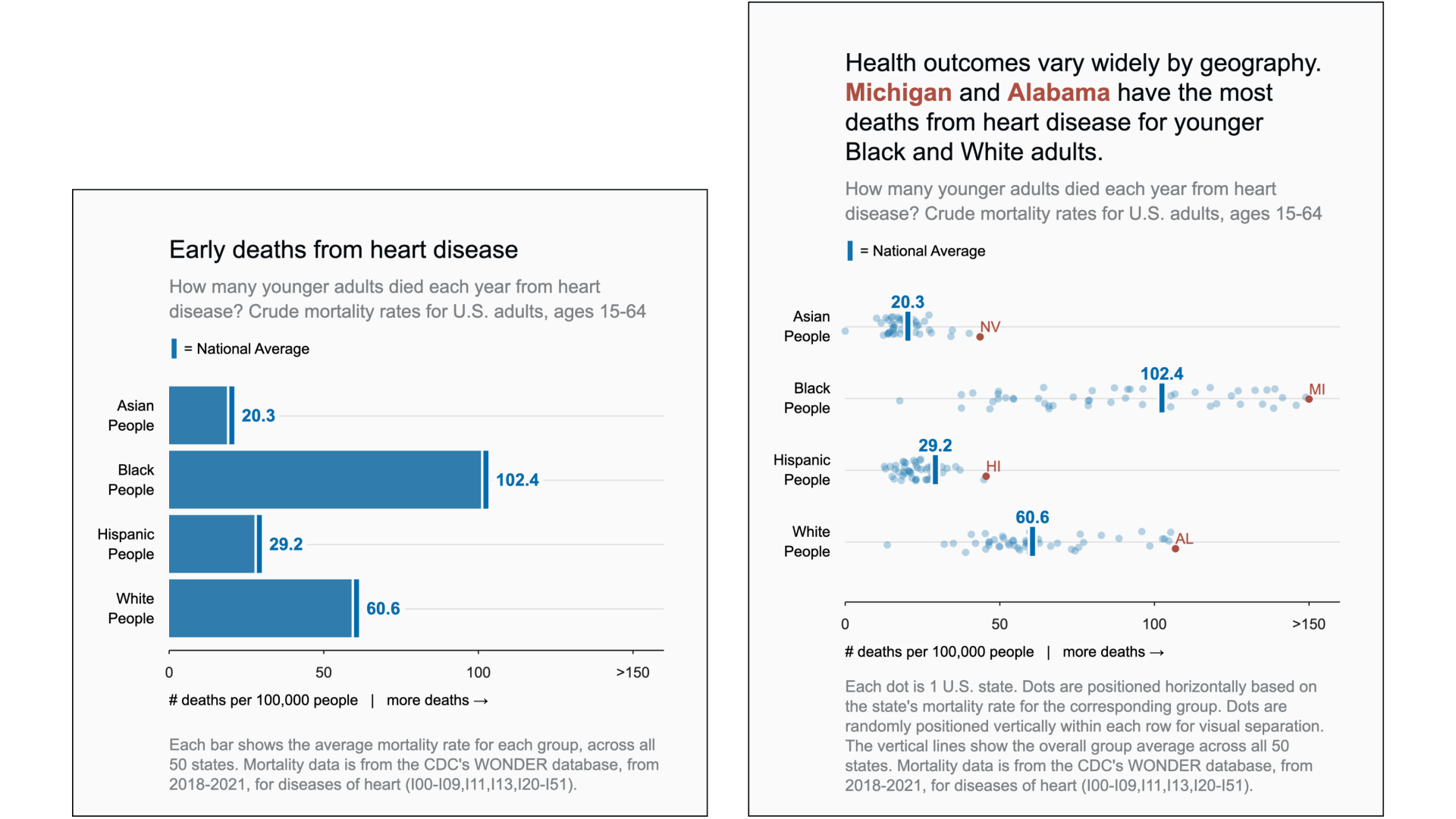"Must Be a Tuesday": Affect, Attribution, and Geographic Variability in Equity-Oriented Visualizations of Population Health Disparities
Eli Holder - 3iap, Raleigh, United States
Lace M. Padilla - Northeastern University, Boston, United States. University of California Merced, Merced, United States
Download Supplemental Material
Room: Bayshore VI
2024-10-17T16:27:00ZGMT-0600Change your timezone on the schedule page
2024-10-17T16:27:00Z

Fast forward
Full Video
Keywords
Health Equity, Public Health Communication
Abstract
This study examines the impacts of public health communications visualizing risk disparities between racial and other social groups. It compares the effects of traditional bar charts to an alternative design emphasizing geographic variability with differing annotations and jitter plots. Whereas both visualization designs increased perceived vulnerability, behavioral intent, and policy support, the geo-emphasized charts were significantly more effective in reducing personal attribution biases. The findings also reveal emotionally taxing experiences for chart viewers from marginalized communities. This work suggests a need for strategic reevaluation of visual communication tools in public health to enhance understanding and engagement without reinforcing stereotypes or emotional distress.